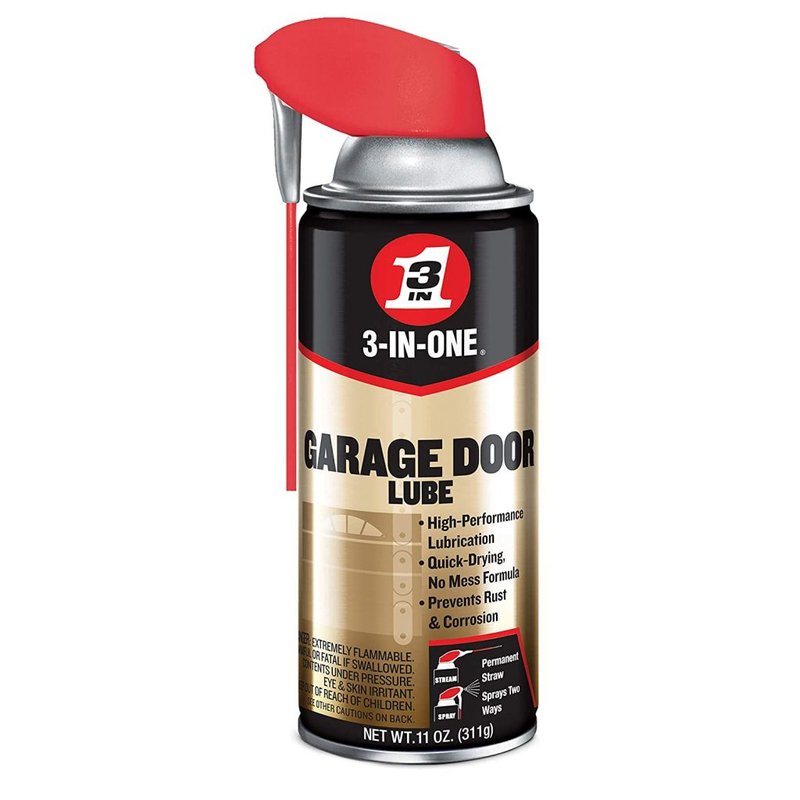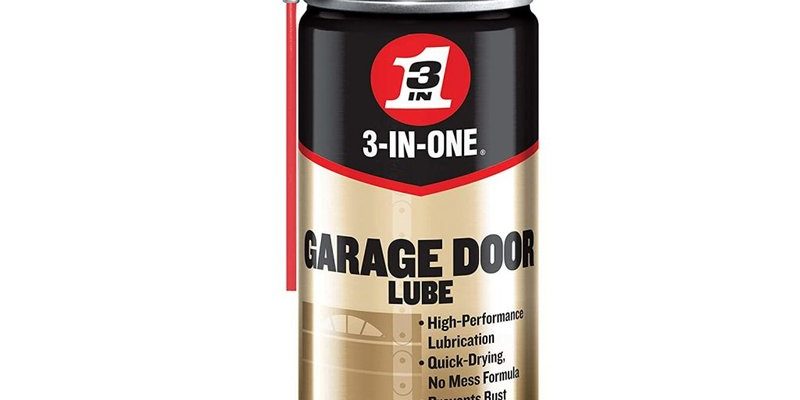
Here’s the thing—choosing the right lubricant isn’t just about stopping that annoying squeak. In a coastal climate, you need something that can actually fight back against corrosion and moisture, not just mask the problem for a few weeks. There are dozens of sprays, greases, and oils out there, but not all are cut out for the challenge of salt, humidity, and wind. Let me explain what makes a good lubricant for door hinges by the coast, and why brands like WD-40 Specialist, 3-IN-ONE, and silicone-based sprays are the usual heroes.
Why Coastal Climates Destroy Door Hinges
Let’s get real—salt isn’t just something that sits on top of hinges. It’s sneaky. It lingers in the air, lands on metal, and holds onto moisture. Every gust of wind is like a little delivery truck hauling salt right onto your door hardware. Over time, this buildup eats away at unprotected metal, causing rust and sticky hinges that are tough to move.
Moisture is the other villain. Even on sunny days, humidity in coastal areas stays high. Water seeps into the tiny cracks and crevices of your door hinges, mixing with the salt to create the perfect recipe for corrosion. Next thing you know, your once-smooth hinge is now screeching every time you open the door.
Honestly, regular lubricants just don’t cut it here. Many will wash off in the rain, or worse, attract dirt and make the hinges even stickier. That’s why you need a lubricant that does more than just lubricate—it has to protect, repel water, and stand up to the elements. Think of it as sunscreen for your metal parts.
Top Qualities To Look For In Hinge Lubricants
Not all lubricants are made equal, and in a salty environment, you’ve got to be picky. The best lubricants for exterior door hinges in coastal climates share a few important traits:
- Water resistance: Products that repel water will last longer and keep rust at bay.
- Corrosion protection: Look for something that creates a protective barrier over the metal, blocking salt and moisture.
- Thin film, not sticky: Thick greases can trap sand and dirt, turning hinges into gritty messes. A thin, non-tacky layer works better outdoors.
- Long-lasting: You don’t want to reapply every month. The best options hold up for months, not weeks.
You might be wondering, “Do all sprays work the same?” Here’s the answer: absolutely not. WD-40 (the original) is a household name, but in salty climates, WD-40 Specialist Water Resistant Silicone or White Lithium Grease is a smarter pick. 3-IN-ONE Lock Dry Lube is another favorite, since it protects, lubricates, and won’t wash off in a rainstorm. Silicone-based sprays are gaining fans too—more on that soon.
Best Lubricant Types For Exterior Door Hinges Near The Ocean
Okay, so what’s actually out there? Lubricants for hinges come in a few main types: silicone sprays, white lithium grease, and oil-based sprays. Let me walk you through the pros and cons of each when you’re up against salty air.
Silicone Sprays are great for repelling water. They coat hinges in a thin, dry layer that won’t attract dirt or sand, and they don’t leave things sticky. They’re also safe for use on painted or vinyl-coated hardware. Think of them as the raincoats of the lubricant world.
White Lithium Grease is a little heavier, but it clings to metal and forms a protective barrier against salt and moisture. It’s best on larger, exposed hinges (think big exterior gates). Here’s a pro tip: don’t overdo it—too much can trap debris, making things worse.
Oil-Based Sprays (like classic WD-40 or 3-IN-ONE oil) penetrate tight spaces and work fast to silence squeaks. But unless they have added anti-corrosion properties, they can sometimes wash away faster or leave sticky residue. Look for “lock dry” or “water-resistant” on the label for the best results.
For exterior door hinges in coastal climates, a water-resistant silicone spray or lithium grease with corrosion inhibitors almost always outperforms regular household lubricants.
Top-Rated Lubricant Brands To Consider
Shopping for lubricants can feel overwhelming—every can looks the same, but the results definitely aren’t. Here are a few reliable choices that stand out for coastal homes:
- WD-40 Specialist Water Resistant Silicone Lubricant: This isn’t your dad’s WD-40. It dries quickly, forms a smart barrier, and doesn’t drip everywhere. Great for hinges exposed to rain and salt air.
- 3-IN-ONE Lock Dry Lube: Specially made for locks and hinges, it leaves a dry, lubricating film that repels water without feeling oily. I like it because it doesn’t attract sand and dust.
- CRC White Lithium Grease: If you’ve got heavy-duty hinges or metal gates, CRC’s lithium grease gives long-term protection. Just apply sparingly.
- Blaster Silicone Lubricant: Blaster offers a silicone spray that’s well-reviewed for sliding doors and exposed hardware, and it’s easy to apply without mess.
You might notice most of these mention “water resistant” or “dry lube” somewhere on the can. That’s not a coincidence—if it doesn’t explicitly say it blocks water or salt, skip it. Cheaper oils just won’t hold up to the demands of a coastal climate.
How To Apply Lubricant To Exterior Hinges (Step-by-Step)
Spraying a little oil on a squeaky hinge and hoping for the best? That’s the quick fix, but honestly, there’s a better way to get lasting results. Especially near the ocean, prep and application make a big difference.
- Clean the hinge: Use a rag or small brush to wipe off any dirt, sand, or loose rust. For stubborn grime, a bit of soapy water helps. Dry thoroughly—trapped water is the enemy.
- Apply lubricant: Spray or squeeze the lubricant directly onto the hinge pin and moving parts. Don’t forget the edges where the door meets the frame.
- Work it in: Open and close the door several times to spread the lubricant into every crevice. If possible, remove the hinge pin, coat it, and slide it back in.
- Wipe excess: Grab a clean cloth and remove any drips or extra lubricant. Less is more—a thin, even layer is perfect.
Here’s a tip: If you see visible rust, use a wire brush or sandpaper to knock it off first, then wipe and apply your lubricant. If you’re dealing with a lot of corrosion, replace the hinge or pin with stainless steel for best results.
Why Universal Lubricants Don’t Work Well By The Coast
You might be tempted to grab any old can of all-purpose lubricant, but here’s why that usually backfires in a salty environment. Universal products might silence a squeak for a week or two, but they often get washed away by rain or fog. Worse, many leave a sticky residue that grabs dust, pollen, and tiny grains of sand—creating a gritty paste that actually wears hinges out faster.
Coastal climates magnify these problems. The constant battle between wet air and salt means any half-measure is doomed to fail. That’s why specialty lubricants matter here. They’re engineered to handle the unique demands of wind, salt, and rain—so you’re not constantly stuck reapplying and cleaning up oily messes.
Honestly, I’ve seen neighbors try to save a few bucks by using generic oils, and within a month, their doors sound like haunted house props. Spend a little more upfront, and you’ll save yourself time (and sanity) down the road.
How Often Should You Lubricate Exterior Hinges By The Ocean?
It’s a fair question—how often do you really need to pull out the spray can? In most inland areas, every 6–12 months is fine. But by the coast, you’ll want to check hinges every 3–4 months, especially after stormy weather or that first wave of summer humidity.
If your door is exposed to direct rain, sea spray, or faces the ocean, check more often. Look for these signs:
- Squeaking or grinding sounds
- Visible rust or pitting
- Stiff, hard-to-move hinges
If things still move smoothly, you’re good—but don’t wait for a problem. A regular spritz of the right lubricant is a tiny bit of maintenance that saves big headaches. It also helps keep your door aligned, so you avoid bigger repair bills down the line.
Choosing Stainless Steel Or Coated Hardware For Even Better Results
Let’s talk hardware for a second. Even the best lubricant can only do so much if your hinges are cheap, raw steel. In coastal climates, upgrading to stainless steel or powder-coated hinges can make a world of difference. These materials naturally resist corrosion and hold up to salt a lot better.
If you’re swapping out old, rusted hinges, look for marine-grade stainless or zinc-coated finishes. Pair them with a proper water-resistant lubricant, and you’ve got a combo that can handle the salty air like a champ. It’s a little more expensive upfront, but you won’t be replacing hinges every year.
Combine smart hardware choices with regular use of a high-quality, water-resistant lubricant, and your exterior doors will swing smoothly—no matter how salty the sea breeze gets.
Wrapping Up: Protecting Doors In Salty, Coastal Air
Coastal living has plenty of perks, but keeping your doors swinging smoothly takes a bit more care when salt and humidity are in the mix. Choosing the best lubricants for exterior door hinges in coastal climates isn’t just about ending that annoying squeak—it’s about protecting your home from the inside out. A water-resistant silicone spray or white lithium grease from trusted brands like WD-40 Specialist or 3-IN-ONE makes the job simple and effective.
Remember to clean hinges before applying, use just enough to cover, and check back every few months. If you’re ready to take it up a notch, pairing high-quality hinges with the right lubricant will give your doors a fighting chance against all that salty air. Just a quick spritz, and you’re back to enjoying those ocean views—minus the rusty soundtrack.
